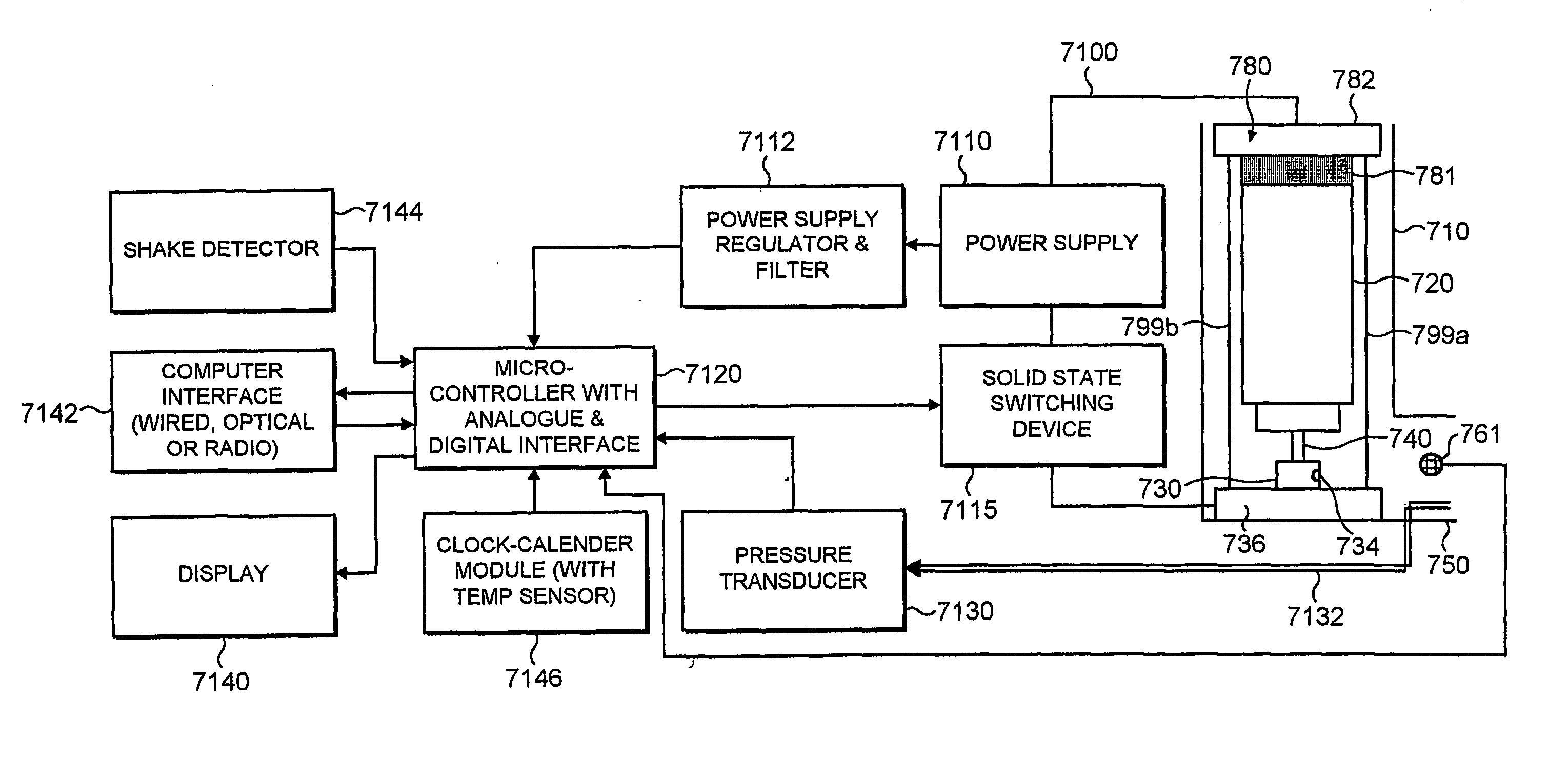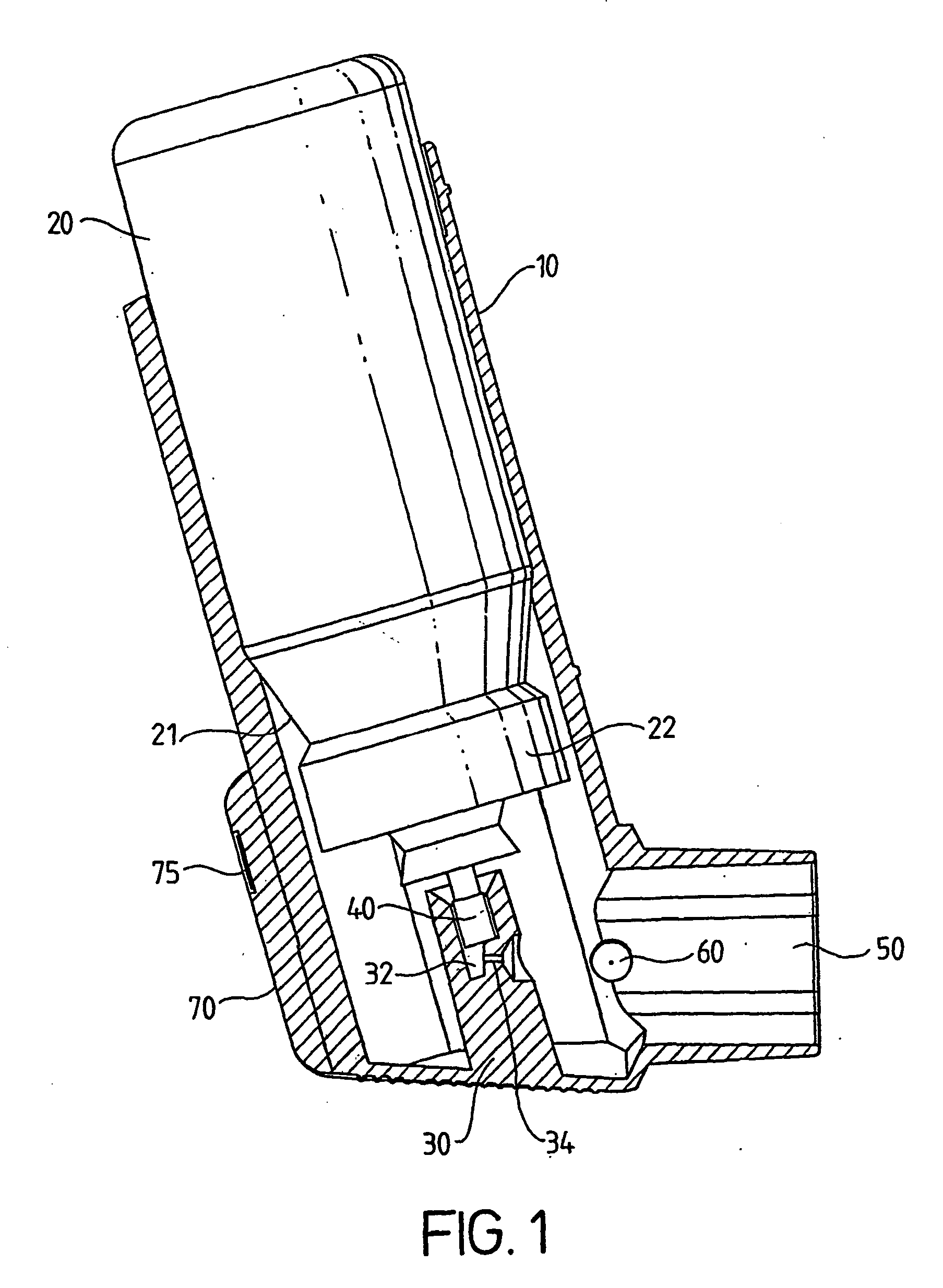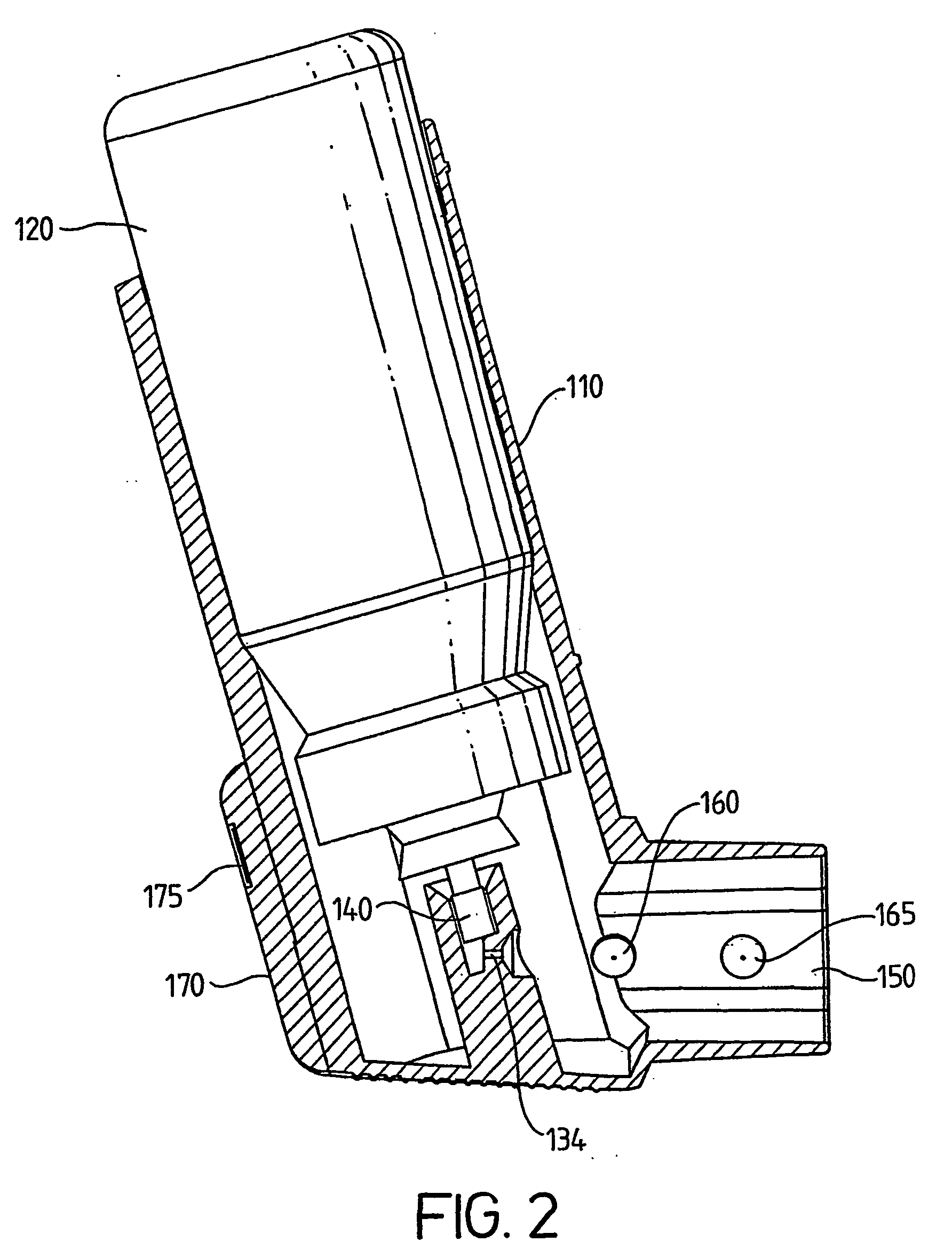Medicament dispenser
a technology of medicine dispensers and dispensers, which is applied in the field of medicine dispensers, can solve the problems of false readings, triggering of sensors, and false readings being registered on the dose counters
- Summary
- Abstract
- Description
- Claims
- Application Information
AI Technical Summary
Benefits of technology
Problems solved by technology
Method used
Image
Examples
Embodiment Construction
[0011] According to the present invention there is provided a medicament dispenser comprising: [0012] (i) a housing having an outlet; [0013] (ii) a medicament container locatable within said housing; [0014] (iii) an electronic dose counter associated with said outlet; wherein said dose counter comprises a first sensor for directly detecting a medicament release dispensible from said medicament container through said outlet.
[0015] In one aspect, the first sensor comprises an emitter and a detector. In a second aspect, the sensor comprises only a detector, for example a pyroelectric detector which responds to a decrease in temperature.
[0016] Suitably, the emitter emits electro magnetic radiation and the detector detects the electromagnetic radiation.
[0017] The electromagnetic radiation emitted from the emitter may be infrared, visible or ultraviolet radiation. Suitably, radiation in the range 0.95 μm to 0.35 μm is used. More suitably, the radiation is in the infrared range. In part...
PUM
 Login to View More
Login to View More Abstract
Description
Claims
Application Information
 Login to View More
Login to View More - R&D
- Intellectual Property
- Life Sciences
- Materials
- Tech Scout
- Unparalleled Data Quality
- Higher Quality Content
- 60% Fewer Hallucinations
Browse by: Latest US Patents, China's latest patents, Technical Efficacy Thesaurus, Application Domain, Technology Topic, Popular Technical Reports.
© 2025 PatSnap. All rights reserved.Legal|Privacy policy|Modern Slavery Act Transparency Statement|Sitemap|About US| Contact US: help@patsnap.com



